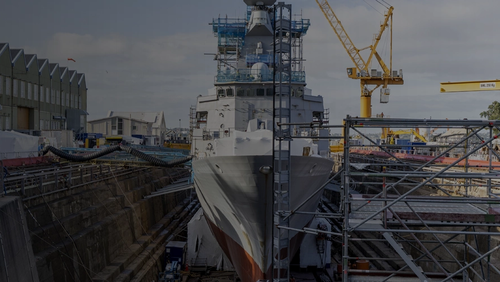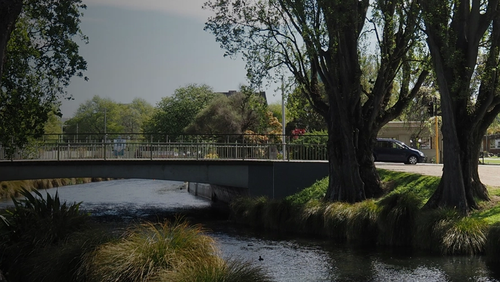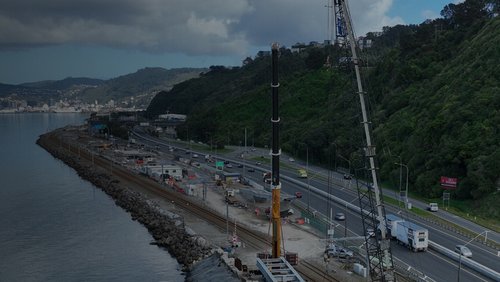8 Oct 2025
Since 2022, commuters along State Highway 2 have seen Te Ara Tupua – the new shared path between Petone and Wellington – gradually take shape along the harbour’s edge. But what’s less visible is the extraordinary engineering effort and innovation behind the scenes to build this major piece of infrastructure.
We spoke with Peter Harrison, a project engineer from HEB Construction, who’s leading the construction of the bridge at Ngā Ūranga – a critical link in the route and one of the most technically demanding components of the project.
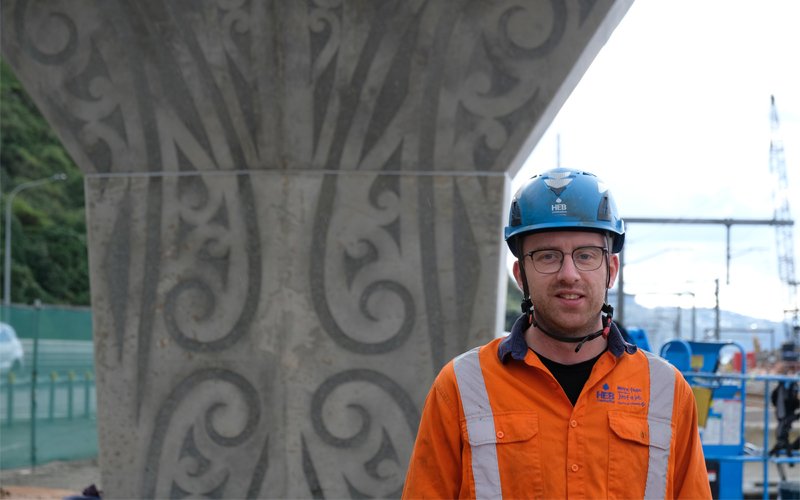
Peter Harrison and a recently installed bridge pier. The cultural etchings on the piers were designed by Mana Whenua Design Lead, Len Hetet.
Working in tight spaces and tighter timeframes
At its core, Te Ara Tupua is about strengthening transport resilience. By reclaiming land from Wellington Harbour alongside the rail corridor and State Highway 2, the project will help protect these critical routes from sea-level rise and provide a backup transport corridor in emergencies. At the same time, it will also deliver a safe, sustainable link for cycling, walking and other micromobility users between Lower Hutt and Wellington.
For engineers, building so close to the water – in a tight corridor between road, rail, and sea – comes with major logistical and technical hurdles. At Ngā Ūranga, where the bridge spans over the railway line, the worksite is particularly tight.
“It’s in a bit of a funky location,” says Peter. “It’s lodged between the ocean and state highway, and we’re going over the railway.”
To safely access the site and work near live power lines, a huge amount of planning went into a critical 16-day shutdown of the rail line over Christmas. During that window, the team had to move quickly so they could work right up against the powerlines.
“We planned for months to make sure that we had enough space to sit the plant and the drill rigs and get the people and materials in,” says Peter. “We had to get as much done as possible during that time, it was quite an intense section of work.”
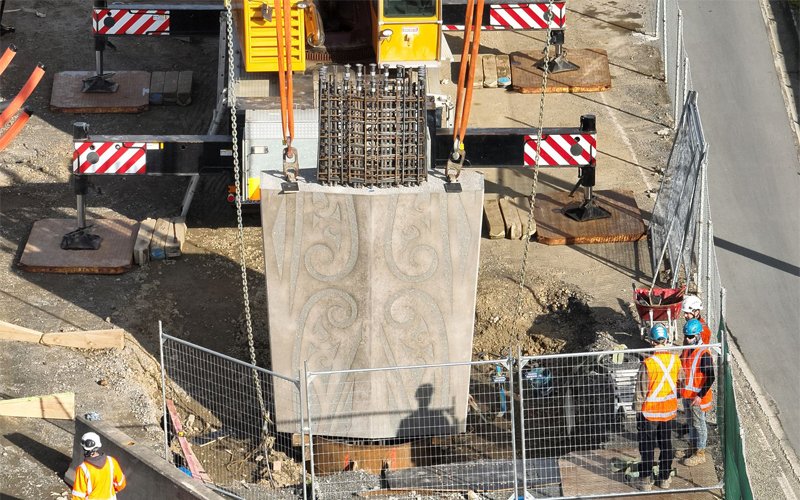
Installing a bridge column. Cultural etchings designed by Mana Whenua Design Lead, Len Hetet.
Seismic challenges and strong foundations
The bridge’s proximity to one of Wellington’s major fault lines added another layer of complexity – a factor carefully considered in the bridge’s design.
“We used massive 2.4-metre diameter piles – some of the largest in New Zealand and disproportionately large for the scale of the bridge and the vertical loading that it receives. This was because of the position relative to the faultline,” says Peter.
But even with just 30m between piles, the geology varied significantly. In the case of one of the piles, there was quite a collapse underground during boring, where a bulge to the side of the pile was created leading to surface collapse.
“We had to improvise and adjust,” Peter explained. “It was at Christmas time – everything was shut. We had to quickly pull all the designers in and come up with a new, safer methodology using only the materials we already had.”
“We were able to redesign the pile in a few days and keep going – with the team able to carry on with the work while the rail line was closed.”
Innovative design for safer, faster construction
Once the piles were in, piers then needed to be installed on top. The team used pre-cast piers with longer bars coming out of the bottom to speed up construction and reduce risk in the confined worksite.
“Instead of the usual method where you excavate down, cut the top of the pile casing and put a rectangle pile cap over the top of it – when we placed a pier on top of a pile, we just had to do a longer non-contact concrete pour without physically tying the two elements together,” says Peter.
“This meant that it was safer because we weren’t having to work in such a tight space, and it was a faster way to produce it – we placed and poured it in two days.”
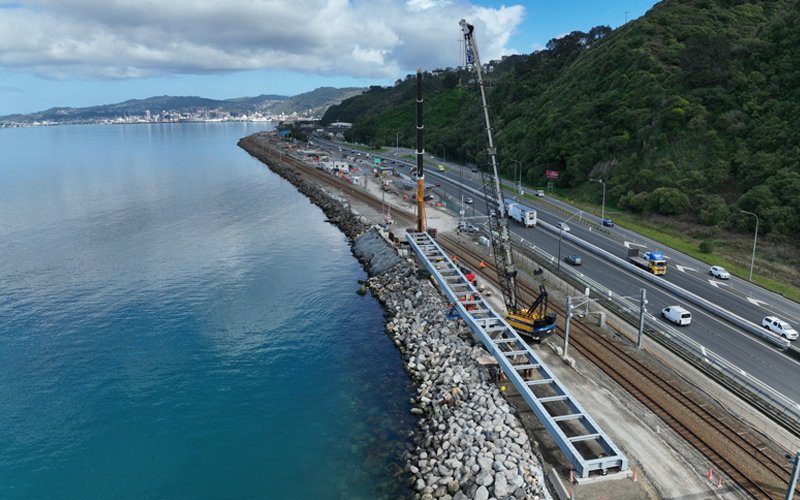
Bridge foundation lift and installation.
Normally, bridges are built from one end to the other – or from the centre out. But at Ngā Ūranga, in the cramped location and to limit disruption to rail services, the team is building from both ends toward the middle.
Peter says the overhead lines will get lowered at Labour Weekend. “We’ve got to build the next two piers and place the central steelwork spans between the two sections of bridge we’ve already built. We’ve got some millimetre accuracies to hit – that’s the high-stakes part and it’s going to be difficult – which is what we find enjoyable as engineers, that challenge.”
A career defining project
Overall, the job has been a fulfilling one for Peter, who originally planned to be in New Zealand for less than a year but is now putting down roots after being drawn into the local industry.
“It’s totally different to what I was used to in the UK, which is a very commercially aggressive environment. Whereas here, you’re in with the client. You’re not trying to bust them for money, you’re all sharing the same risks and working towards the same goal,” he says.
And unlike many civil engineering projects that remain hidden from public view, Te Ara Tupua is one people will see, use, and enjoy every day.
“A lot of our work is underground or in remote areas,” says Peter. “But this is different – it’s a public space, it’s for people. I’ll be proud to bring my family here in the future and say, ‘I helped build that.’”

